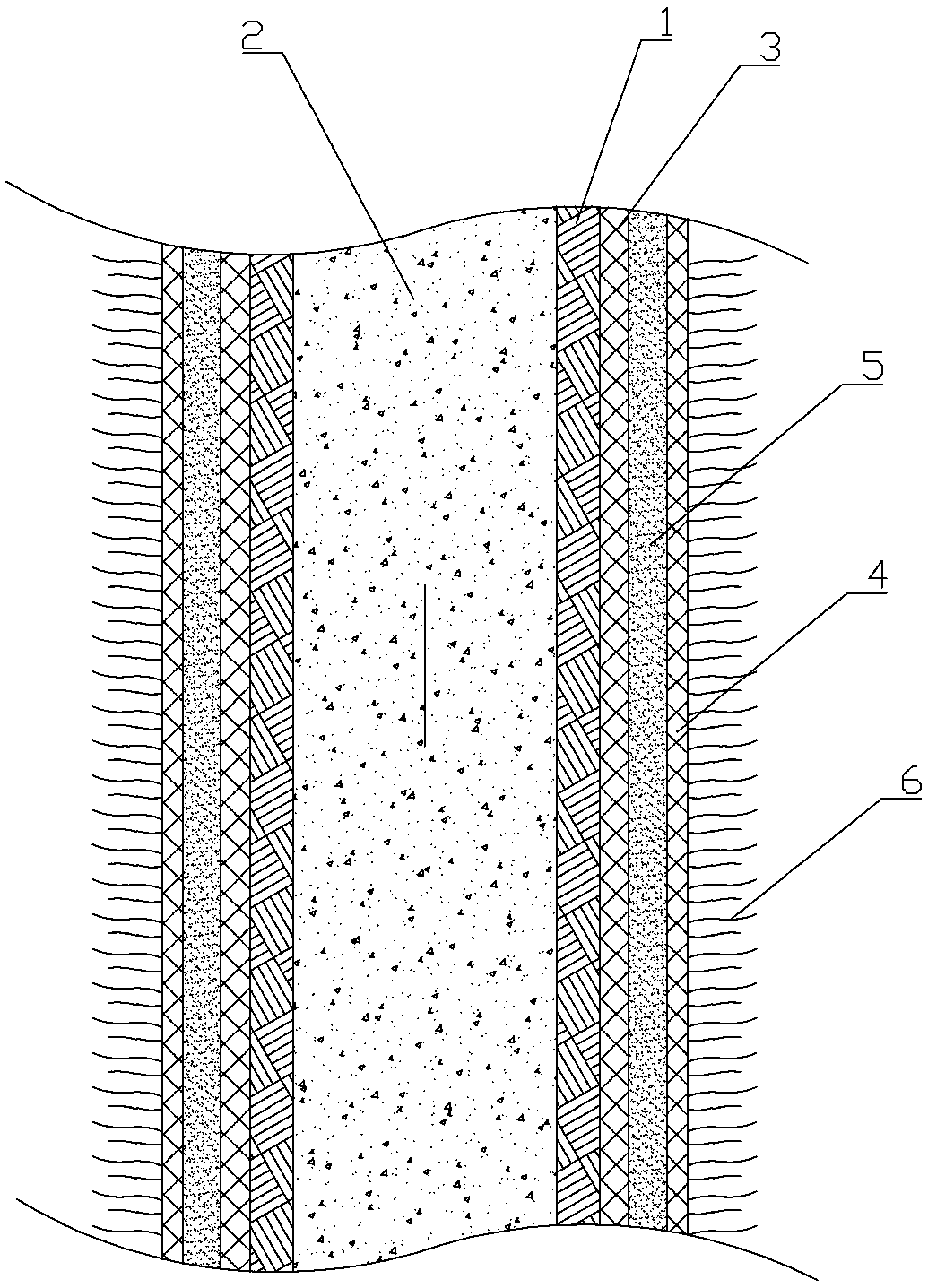Ecological base for sewage treatment, and preparation method thereof
A sewage treatment, ecological-based technology, applied in water/sewage treatment, adsorbed water/sewage treatment, water/sludge/sewage treatment, etc. Effect
- Summary
- Abstract
- Description
- Claims
- Application Information
AI Technical Summary
Problems solved by technology
Method used
Image
Examples
Embodiment 1
[0030] Such as figure 1 As shown, an ecological base for sewage treatment includes a plant skeleton 1, an outer covering layer, and an internal filler 2. The plant skeleton 1 is woven from metal wires, and the outer covering layer is artificial turf or artificial turf loaded with heavy metal adsorbents. The coat material imitates the plant shape, and the inner filler is the humus produced by fermenting the litter of plants. Metal wires are used to weave into the form of plants, and the outside of the wires is covered with artificial turf, which looks like a living plant from the outside, and the function of living plants is realized by filling the skeleton with humus fermented from plant litter. The artificial turf comprises a bottom layer and artificial fibers 6 extending from the bottom layer, the bottom layer is made up of a first bottom layer 4 and a second bottom layer 3 that are detachably connected, and a heavy metal adsorbent 5 is filled between the first bottom layer ...
Embodiment 2
[0032] The preparation method of ecological base comprises the following steps:
[0033] with wire or TiO 2 Composite fibers weave into plant-shaped skeletons; TiO 2 The preparation method of the composite fiber is to prepare the titanium dioxide precursor solution by the sol-gel method, and spin the PVP / TiO2 by electrospinning technology. 2 Precursor composite fiber, the precursor composite fiber is calcined at 450°C to obtain TiO 2 Composite fibers.
[0034] Crush the collected litter, add starter, put it into a fermenter to ferment for 34-40 hours, control the fermentation temperature at 70-75°C, and control the humidity at 60-65%. The humus formed after the fermentation of the litter is filled in the inside the skeleton;
[0035] Prepare the outer covering layer, take plastic grids that can be inserted into each other as the first bottom layer and the second bottom layer of artificial turf, take artificial fibers and fix them on the first bottom layer to form lawn gras...
Embodiment 3
[0038] The preparation method of heavy metal adsorbent described in embodiment two, comprises the following steps:
[0039] S1: Soak the litter in NaOH solution for 12 hours, then cook at 60°C for 4 hours, then clip out the leaves and brush off the mesophyll with a brush to obtain the veins of the leaves;
[0040] S2: Take acrylamide and dissolve it in deionized water, then dissolve the above-mentioned prepared veins in it, react for 20 minutes at a temperature of 20°C, then add initiator ammonium persulfate and anhydrous sodium sulfite, and react at 20°C for 8 hours, Wash with acetone after cooling to room temperature, and obtain cellulose grafted polyacrylamide after vacuum drying;
[0041] S3: Take FeCl 3 ·6H 2 O, dissolved in anhydrous ethanol-ultrapure water mixture, adding vitamin grafted polyacrylamide, reacting for 15 minutes, slowly adding sodium borohydride solution dropwise and reacting for 15 minutes, then taking out the solid, passing through ultrapure water, acet...
PUM
 Login to View More
Login to View More Abstract
Description
Claims
Application Information
 Login to View More
Login to View More - R&D Engineer
- R&D Manager
- IP Professional
- Industry Leading Data Capabilities
- Powerful AI technology
- Patent DNA Extraction
Browse by: Latest US Patents, China's latest patents, Technical Efficacy Thesaurus, Application Domain, Technology Topic, Popular Technical Reports.
© 2024 PatSnap. All rights reserved.Legal|Privacy policy|Modern Slavery Act Transparency Statement|Sitemap|About US| Contact US: help@patsnap.com








